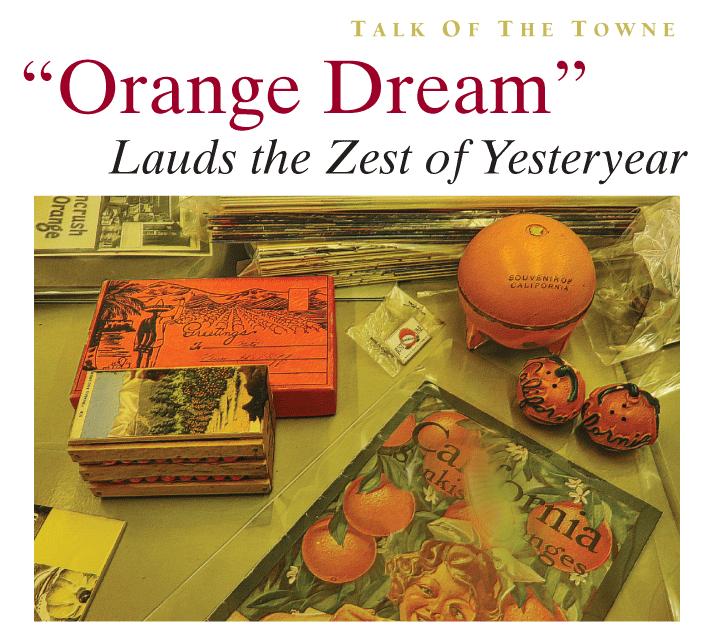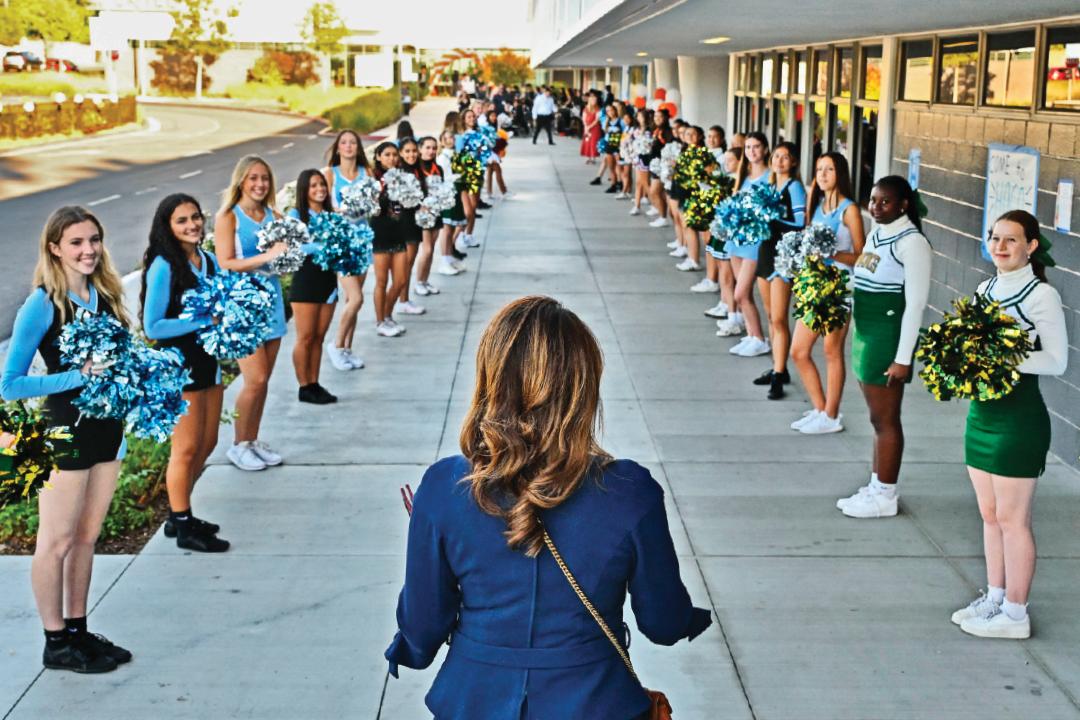
Orange salt and pepper shakers, perfume vials, trade publications and candy packaged in miniature orange crates sit on display as part of the “Orange Dream” exhibition at Chapman University. The exhibit will be open through December 14 at the Frank Mt. Pleasant Library of Special Collections and Archives.
- - - -
Orange Dream: California’s Citriculture Through Advertising
Jane Owens remembers the spring nights of her youth, when the breeze would carry the sweet scent of orange blossoms across her hometown. The fruit holds a particular significance for her, because she is a third-generation Orange resident who comes from a family of orange growers.
“With tens of thousands of Valencia trees spread across the county, the effect was magical,” says Owens, now president of the Orange Community Historical Society.
A new exhibit at Chapman University celebrates the history and nostalgia of the orange industry.
“Orange Dream: California’s Citriculture Through Advertising,” a collection of more than 100 pieces of citrus industry memorabilia, runs through December 14 at the Frank Mt. Pleasant Library of Special Collections and Archives.
The exhibit shows how growers used promotional items to spread the word about the orange’s vitamin-rich nutrition.
Chapman purchased the citrus-related items—including pamphlets, souvenirs and a near-complete run of the trade journal, The Citrograph—in July from a rare book dealer, says Rand Boyd, exhibit curator and special collections and archives librarian.
In the exhibit, there are orange salt and pepper shakers, orange scented perfumes, wrapping papers for California oranges—some with graphics and coupons printed on them—and more than 200 orange crate labels used to identify growing and packing locations.
The exhibit is important, because it connects the city and county to its past, Boyd says.
Spanish missionaries began planting citrus fruit in California in the 1700s. That blossomed into a prosperous industry under wealthy landowner William Wolfskill, considered the “granddaddy” of California’s citrus business, according to the California Farm Bureau Federation.
“The industry was very important to Orange County in the early years of the 20th century,” Boyd says. “The county had always been based on agriculture, but the citrus industry helped draw attention to it because of the efforts to glamorize the whole idea of the orange and by extension the county and the state. Citrus advertising seemed to go hand-in-hand with state boosterism during this period.”
This is not Chapman’s first exhibit focused on local history, says Annie Tang, coordinator of special collections and archives. The library has various items, including rare books that focus on California boosterism, which refers to the promotion of a person, organization or cause, from the 1890s to 1920s.
“Farmers were particularly targeted through advertising and literature to move to the ‘land of sunshine,’ an example of the bolstering of the state’s reputation to boost its permanent population,” Tang says.
Wolfskill’s introduction in the 1870s of the navel orange drove the economic and social development of California, leading to the state’s second gold rush, the federation says.
The exhibit answers questions that area residents might have about the area.
“Local history shapes our local present,” Tang says. “Why was the town called Orange? Why Orange County? There are reasons why California is still known as the breadbasket of the world. Oranges, the fruit industry, and agriculture in the past made it and makes it so today,” Tang says.
Owens says a lot has changed since her youth. Back then her neighborhood was rural, there was no mail delivery, trash collection or even sidewalks, but the mark oranges have made on the region can’t be denied.
“Citrus dollars once dominated our local economy and played an important part in making our town what it is today,” she says. “My grandparents actually sold a section of their orange grove on Shaffer Street to Chapman University for expansion and construction of dormitories. I know they would be overjoyed to see the positive impact the university is having on our community.”
“Orange Dream: California’s Citriculture Through Advertising” runs through December 14, 2018 at Chapman University’s Frank Mt. Pleasant Library of Special Collections and Archives. The community may view the archives from 10 am to 5 pm Monday through Friday.
One University Dr, Orange CA 92866 / 714-538-7756



